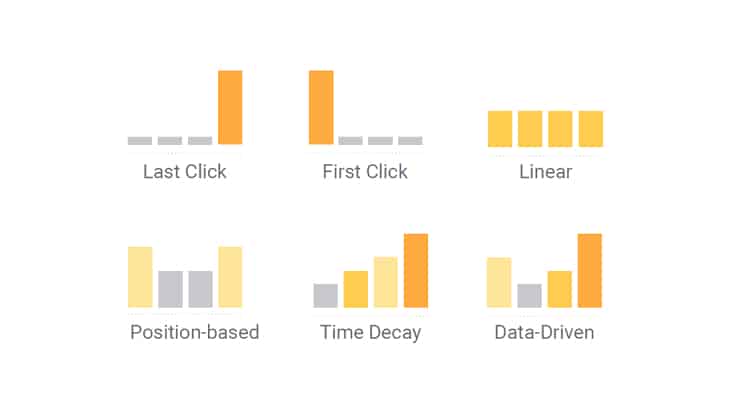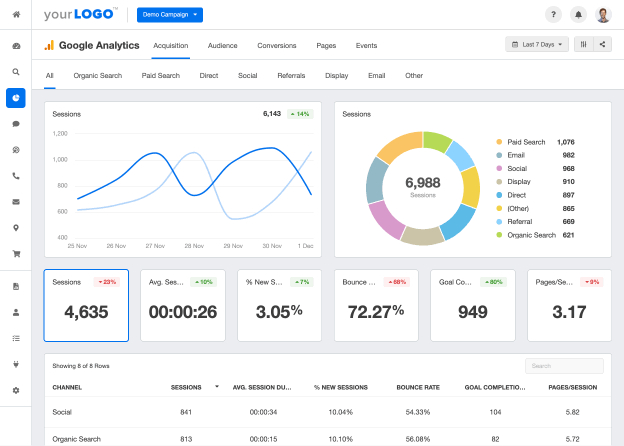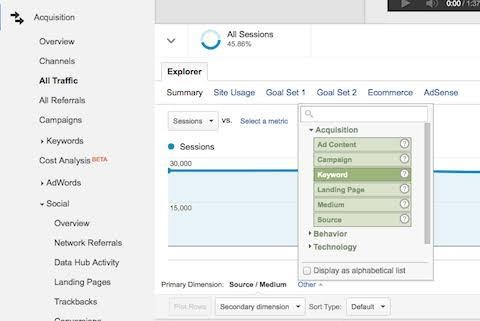Ads Attribution: Connect Ads to Revenue
In Q2’22, Google made $7.34 billion in revenue from advertising. That shows marketers are spending money heavily on advertising. But the question is, are they getting adequate results?
As John Wanamaker once said, “Half the money I spend on advertising is wasted; the trouble is I don’t know which half.”
And this problem continues. Despite having several analytical tools, marketers are not yet sure where their advertising money is going.
In addition, a long and complex customer journey has further complicated things.
But there is a way – Ads Attribution!
The ads attribution modeling informs analytical tools like Google Analytics and Salespanel which channel or keyword is dedicated for conversion. It enables marketers to analyze organic searches, display ads, and social media engagement.
Sounds interesting?
Let’s understand ad attribution models in detail.
What is Ads Attribution?
A customer interacts with different ads from a vendor during the conversion journey. Attribution models let you select how much credit each ad should get for higher conversion.
Attribution models help you better understand how your digital ads are performing. It is analytical information that you can use to better optimize your digital advertising process. It helps you improve advertising ROI and make smart decisions on time.
Ads attribution provides advertisers more control over their digital ad spending. They can decide how much credit each ad must use to achieve desired conversion rate. Besides this, attribution models help to:
- Reach customers earlier in the sales cycles and find ways to convert them faster.
- Select the best model based on how people search for your business online.
- Optimize your bids after analyzing your ads performance.
Different Google Ads Attribution Models Responsible for Better Convention
Attribution models are important in Google ads to understand the performance of various keywords, ad groups, and campaigns. It provides you with a complete overview of your different digital ads so you can spend your money on the most result-driven ad campaigns.
Usually, marketing teams only focus on just the last-click model to understand their customers and ads performance. But, this is not viable today.
Research shows that an average customer needs to hear or see a brand message at least seven times before purchasing. Thus, you cannot rely upon one model to gain insight into your digital ad campaigns.
You need to use multi-touch attribution models to monitor different ad campaigns in your industry. Here are all the Google ad models that you can select to measure your paid campaigns:
1. First click attribution model
First-click attribution model gives all credit to the first touchpoint of the customer. This touchpoint is the very first interaction and for ads, would be the campaign or keyword.
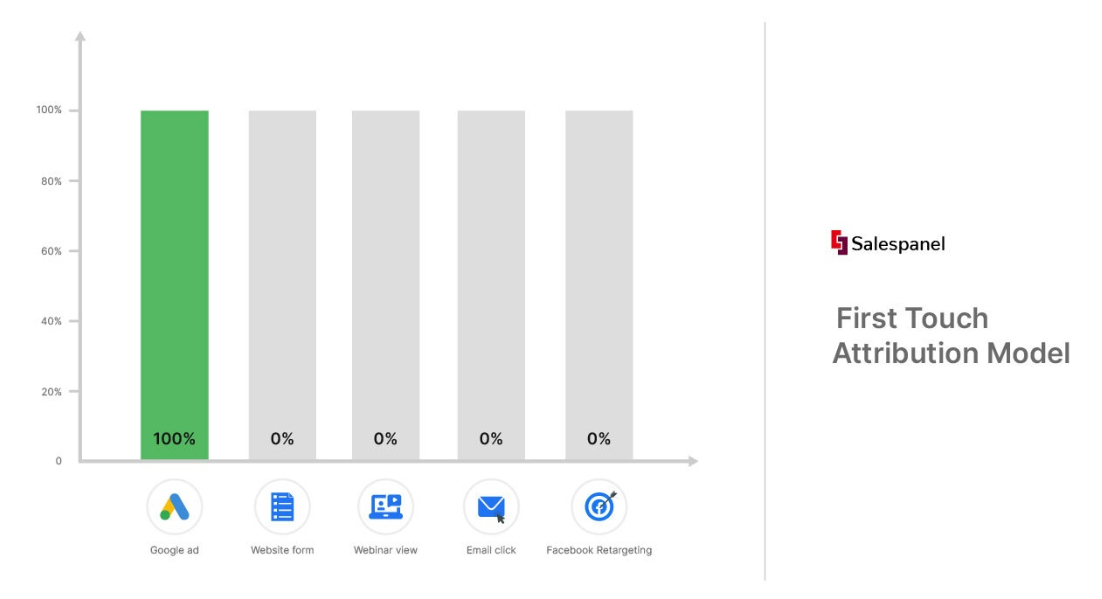
The Right Time to Use
The first-click model helps you understand which marketing channels generate new prospects. You can use this model to know which channel brings more leads into your funnel if you run ads on more than one marketing channel.
Upside
This ad attribution model can help you demonstrate how your customers are landing on your website or mobile app.
Downside
It does not provide a complete picture. This attribution considers the first click the most crucial in the customer journey, but unfortunately, it is not always the case.
Best for — Creating brand awareness and targeting the right marketing channel
2. Last-click attribution model
As the name suggests, this attribution gives all credit to the leads generated from the last touch point. The last-click attribution model helps you understand the final decision-making touch point.
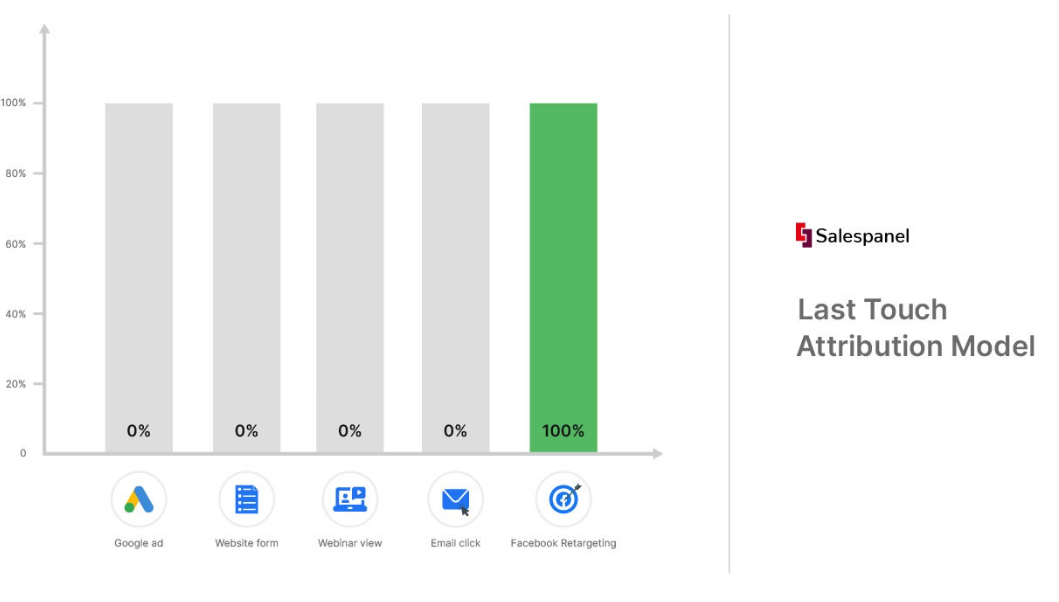
The Right Time to Use
This model helps you understand what convinced your customers to take action. It can further help you optimize your other marketing campaigns. You can find the final action that led to conversion i.e revenue.
Upside
Using the last-click model in ads monitoring is simple because it is the default model in Google analytics.
Downside
Similar to the first click, this attribution does not provide a complete picture of your customer’s journey.
Best for — Email marketing campaigns
3. Position-based attribution model
Position-based model is also known as the U-shaped or hybrid model. In this model, 40% credit is given to both first and last clicks. And the remainder of the credits is distributed among other marketing channels. It helps to cover all the marketing channels bringing leads into your pipeline.
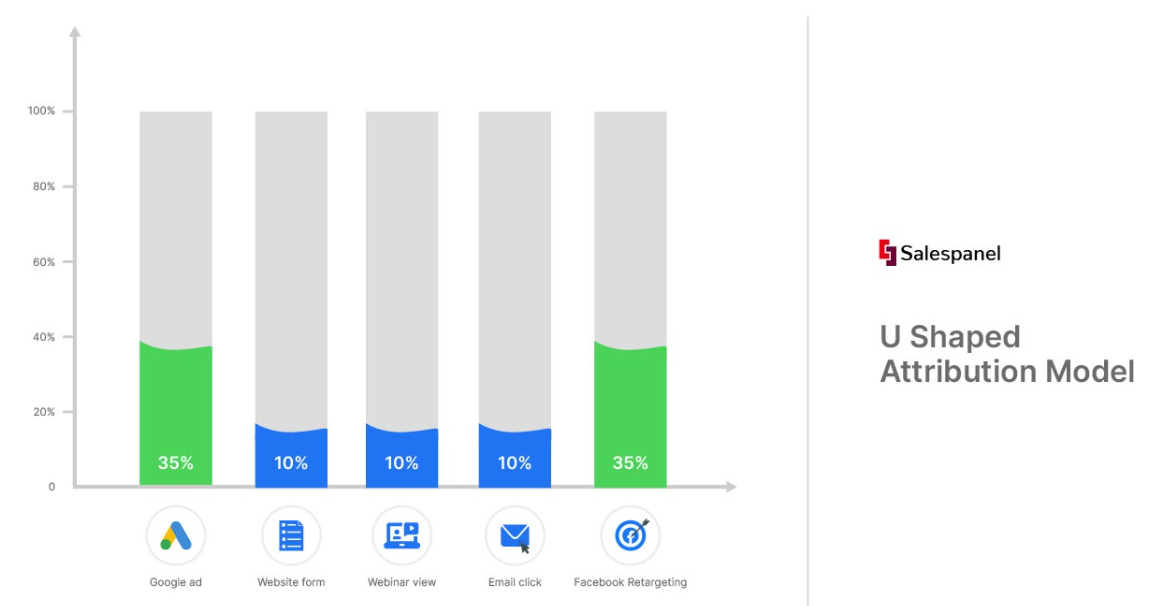
The Right Time to Use
This attribution model is perfect when you want to target all the relevant marketing channels. It focuses on the first channel that brings leads your way. But, it does not ignore other marketing channels that contribute to improving your conversion rate and return on investment.
Upside
It provides a complete picture of your customer’s journey. It helps you understand touchpoints that generate potential leads and revenue for your business.
Downside
Position-based attribution model dedicates 20% of credits to different marketing channels. Now, it is a dubious point whether those other marketing channels are relevant or not. If those channels are relevant to your business, you are unnecessarily wasting your advertising funds.
Best for — To know the final touch point that made sales possible and find the high conversion channels.
4. Linear attribution model
This is a straightforward ads attribution model that distributes credit equally among all the channels coming in the way of purchase. It is a simple model to create brand awareness and understand which marketing channel is more effective for you.
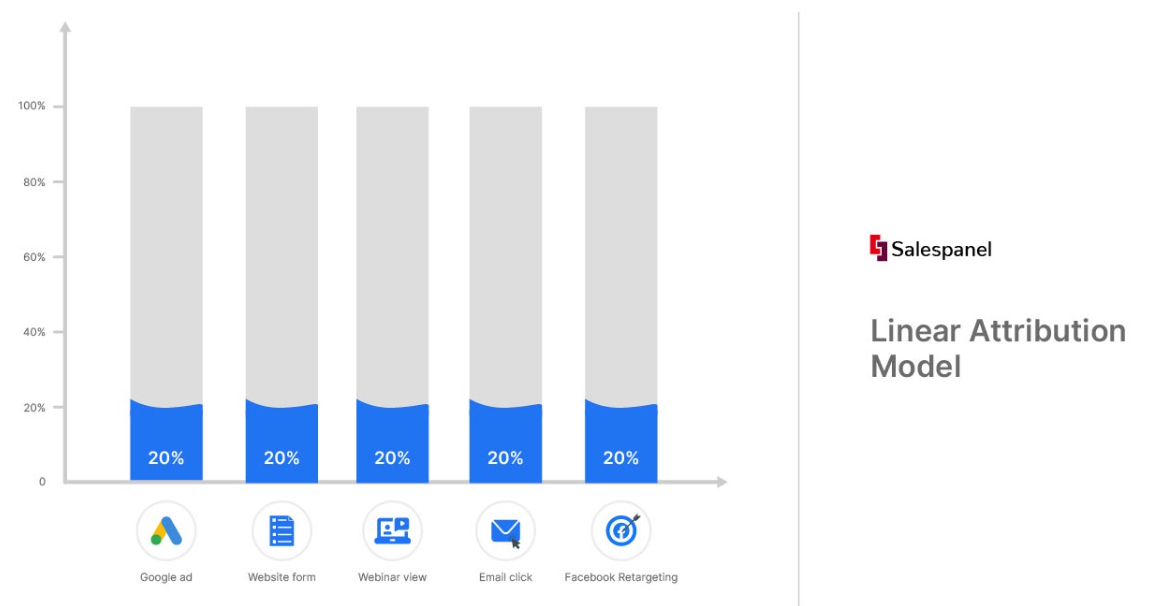
The Right Time to Use
This approach is best for businesses that offer subscription-based services. Since your revenue is periodic and product-based, you can better measure your brand reach and revenue with this model.
Upside
This is an ideal ad attribution model for retailers to analyze each step in the conversion path.
Downside
Assigning an equal value to each stage can skew the results as steps with both high contribution and low contribution get equally weighted.
Best for — Subscription-based businesses
5. Time-decay attribution model
The time-decay attribution model focuses on the channels closer to the sale point and less on channels near the top funnel. It gives more credit to the factor that helped prospects to make a purchase.
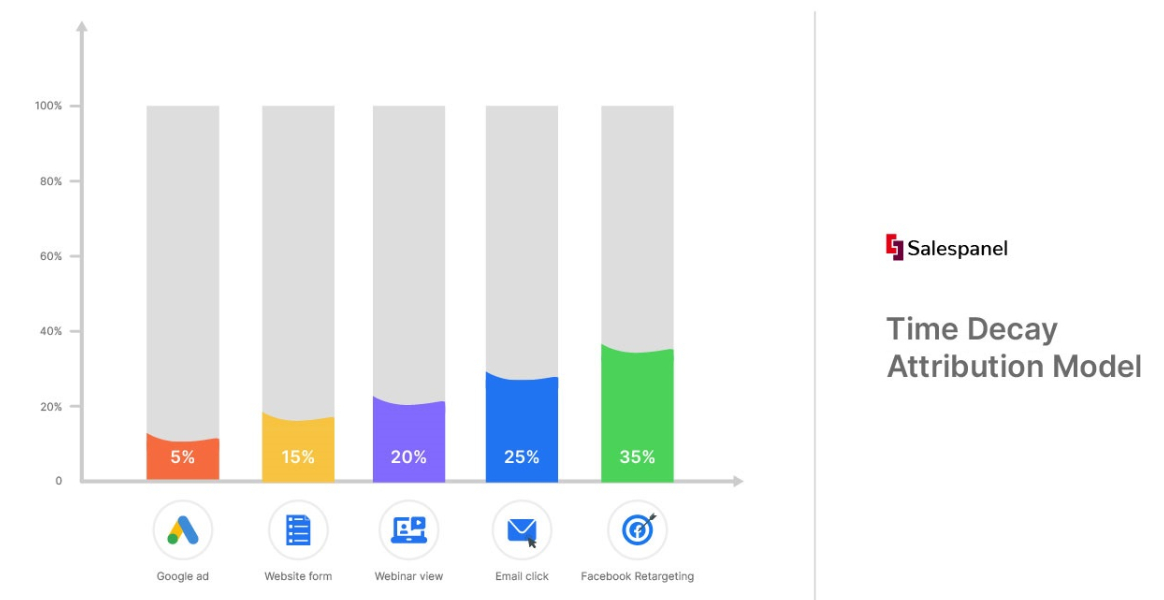
The Right Time to Use
Do you have a long sales cycle? Are you struggling to understand channels that push your prospects to the bottom of the funnel? Then, this model is the best as it gives credit to every vital marketing touch point.
Upside
As the model focuses on interaction near the conversion, it can help find the search terms and keywords your customers use when they are ready to purchase.
Downside
This model only focuses on the channels close to the conversion, so it may not show the accurate weightage across each channel. It might fail to present the bigger picture.
Best for — Retarget your potential customers
6. Data-driven attribution model
The latest Google ads attribution model uses machine learning algorithms to give credit to the most result-driven channels in the conversion path. It is also known as the algorithms-based attribution model, as it gives priority-based credits to all the elements in the funnel.
The Right Time to Use
When running multiple marketing campaigns across channels or multiple ads, use the data-driven attribution model. It can help you identify channels that generate more qualified leads.
Upside
This is the most accurate and organic attribution model for retail businesses to understand their most important marketing channels.
Downside
This model is only available for high-value sites with significant traffic and conversion rate. According to Google, the website has at least 300 ads interaction and min. 300 conversions within 30 consecutive days to use this attribution.
Best for — Lead generation
The Best Ads Attribution Models for B2C in Google Analytics
B2C businesses can use Google Analytics to measure the right attribution models to boost ad campaign performance. The vital B2C analytics are:
- The multi-channel funnel to know the path that visitors took to reach to purchase.
- Compare your unique and returning visitors to analyze how users behave over time.
- Use the Site speed reports to show what users think of your website, like how great your copy is and how compelling your images are.
- Measure the effectiveness of each site page.
- Use segments to understand how your users behave on desktop and mobile devices.
The Best Ads Attribution Models for B2B in Google Analytics
B2B attribution models are a set of rules giving decision-makers an idea about the activities that got customers closer to a purchase.
Since B2B sales cycle is longer and more complex than B2C, thus, they need to focus on some advanced analytics like:
- Tracking post online conversion data. In other words, how your customer’s journey turns out after filling out a form on your site.
- Use past purchase data to create personalized marketing campaigns.
- Don’t just use the revenue to measure your top-performing marketing channels. Also, focus on channels driving brand awareness.
- Experiment with different buyer personas and lead generation sources.
B2B Ads Attribution with Salespanel
Since B2B customer journeys are long and complex with a focus on account and individual analytics instead of holistic data, there is often a need for a specialized tool. Salespanel or a similar tool can help.
Salespanel provides you analytical data at the individual or account level and attributes advertising data for the same. If you are using UTM parameters or tracking templates, Salespanel can track campaign ID, ad ID, keyword, etc., and connect the data to each individual lead.
This helps you in several ways:
- Accurate B2B ads attribution for not only visitors but also individually identified leads and customers.
- Lead qualification and prioritization. You can prioritize or score leads based on how important each campaign or keyword is for you.
- Segmentation based on ad data. You can segment prospects from different ad campaigns or keywords and run targeted retargeting, email marketing, and other campaigns.
- Send ad attribution data to sales reps. Pass campaign, keyword, website engagement, and other data points to your reps to help them better understand leads.
Learn more here.
Just Pick the Right Ads Attribution Models!
Attribution modeling provides a clearer understanding of which channels are effective for converting leads. Depending on the model you pick, it assigns credit to various channels and campaigns/keywords. Attribution models are intended to assist you in understanding how and why someone converted. Wrong attribution models will lead to poor conclusions, while correct models will reveal some significant facts.
Do not rely on one attribution model; choose one based on your business objectives. If a given model does not meet your needs, select another model or compare many models. Then, incorporate them into your campaigns to make a marketing decision and see whether they generate additional cash for your company.
Sell more, understand your customers’ journey for free!
Sales and Marketing teams spend millions of dollars to bring visitors to your website. But do you track your customer’s journey? Do you know who buys and why?
Around 8% of your website traffic will sign up on your lead forms. What happens to the other 92% of your traffic? Can you identify your visiting accounts? Can you engage and retarget your qualified visitors even if they are not identified?
